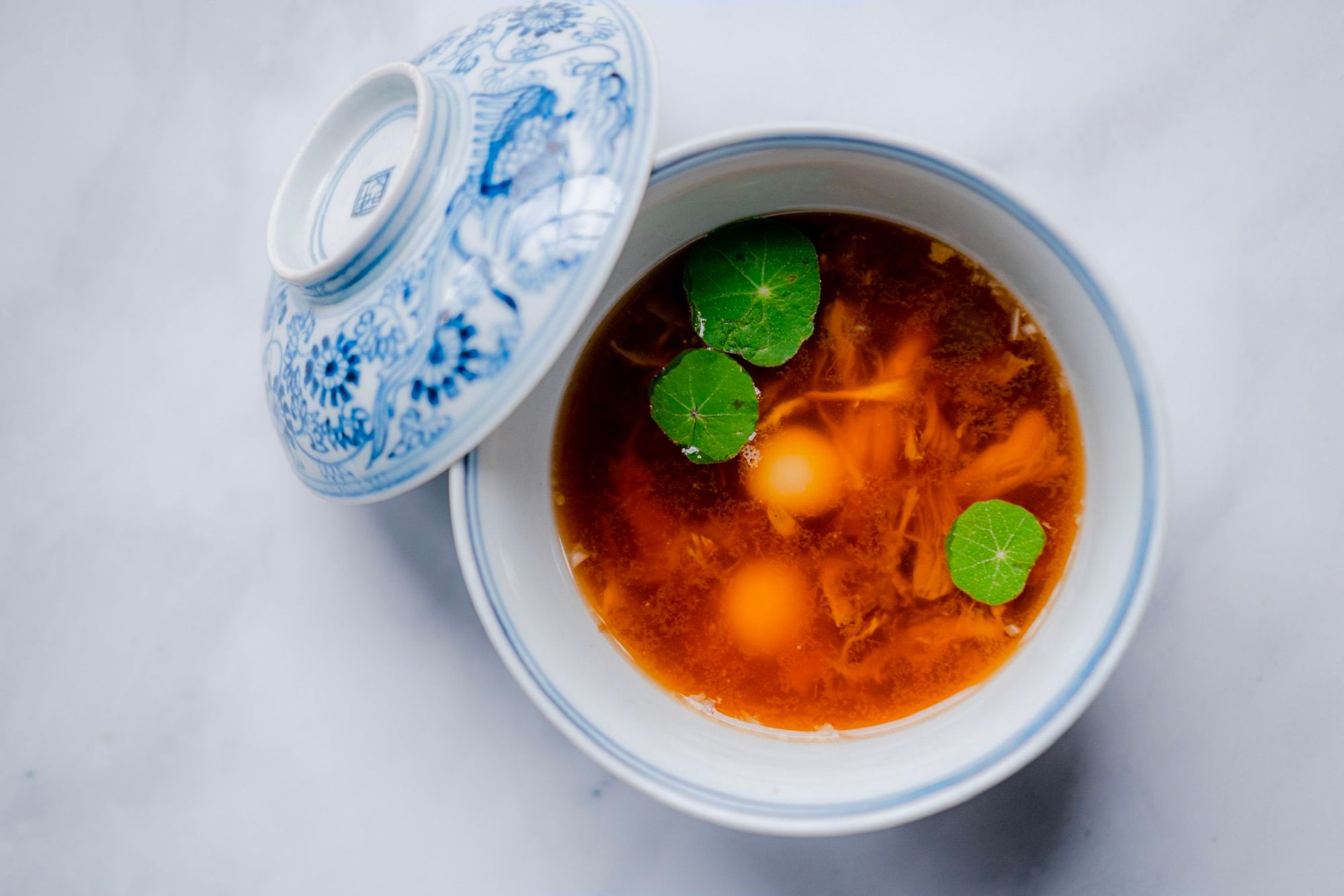Chef David Yoshimura's thoughtful, soulful spins on Japanese home cooking, elevated as a series of finely composed and richly flavored dishes at his one-year-old Russian Hill restaurant Nisei, make for a memorable dining experience.
A former chef de cuisine at Michelin two-starred Californios, Chef Yoshimura broke out on his own in debuting Nisei in the mid-pandemic of Summer 2021. The nine-course tasting menu ($198) takes diners on a journey through the flavors of rustic Japan — the balanced, seasonal, traditional style of cooking known as Washoku. You are likely to seek some sort of raw-fish element on the menu, but sashimi and nigiri are not the stars here.
Instead, some flavors familiar to omakase fiends arrive in different forms — like a small amuse bouche of Maine scallop rendered in cooked, almost raw, and dried form; or ankimo (monkfish liver) made into a pate served on milk bread with raspberries.
The "main" meat courses on the most recent menu featured Yoshimura's simple take on Japanese curry — here with slices of breaded and fried squab breast — and a final, comforting savory course of tender unagi (eel) with rice and furikake.
The highlight of the meal, for me, was a soup course that came early in the menu — listed only as "Suppon. negi, mochi" — with negi being Japanese scallions. The umami-rich broth, with at first I thought was beef, was like the perfect winter warming bowl. And as Chef Yoshimura would reveal, this is actually his take on terrapin stew — the rich turtle soup found these days mostly in New Orleans, but versions of which are popular in Asia as well. (An early menu at Chef Corey Lee's Michelin three-star Benu, ca. 2010, featured a "snapping turtle veloute" that diners raved about, and New Jumbo Seafood Restaurant in the Outer Sunset makes a turtle soup for banquet menus.)
"While terrapin stew isn’t something I grew up with, turtles are still a widely popular ingredient in Japan and across Asia; they are also something that is still prominently used in restaurants in New Orleans today," Yoshimura tells us.

"The concept of Nisei is to showcase the marriage of Japanese and American cuisine which is exactly what I was hoping to do with this dish," Yoshimura says. "I wanted to show that terrapin, while considered an exotic ingredient, is more approachable than guests may think. I used inspiration from my time at Kohaku which is where I first learned how to prepare suppon. The dish I am currently serving prepares the terrapin in a very simple manner to show guests the flavor of turtle and nothing else. The stew is then garnished with mochi and negi as a nod to another popular soup called Ozoni. Guests have been very receptive to this dish thus far and I hope to be able to introduce more unique ingredients as the menu continues to evolve."
Despite multiple surprises and delicious bites throughout the meal, this stew was the type of thing I was still thinking about when I went to bed and longing to taste again the next day — a food memory I won't shake very easily or soon. And while I've had great terrapin stew in New Orleans, this version is more refined, and more deeply flavored than anything I remember.
Terrapin stew was a popular American delicacy of the 19th Century, and a prized dinner for Gold Rush-era settlers in San Francisco — so much so that demand for it may have led to over-fishing by ships coming up the Pacific coast. An early tale of San Francisco restaurant lore had several downtown spots sharing the same live sea turtle to trot out to guests, as turtle supplies dwindled — all while cooks in the kitchen had come up with substitutions to fake terrapin stew or "green turtle soup," as it was also often called.
The version at Nisei is good enough to help a modern palate understand what all those prospectors were clamoring for.
Nisei - 2316 Polk Street - Find reservations here.
For budgetary reasons, SFist editors and contributors occasionally accept complimentary meals from restaurants and their publicists. More often, we pay out of pocket for our meals. While we mostly refrain from writing formal reviews, we make every effort when giving opinions about restaurants to be objective, and to focus more on food and ambiance than service in order to make up for any possible bias.

